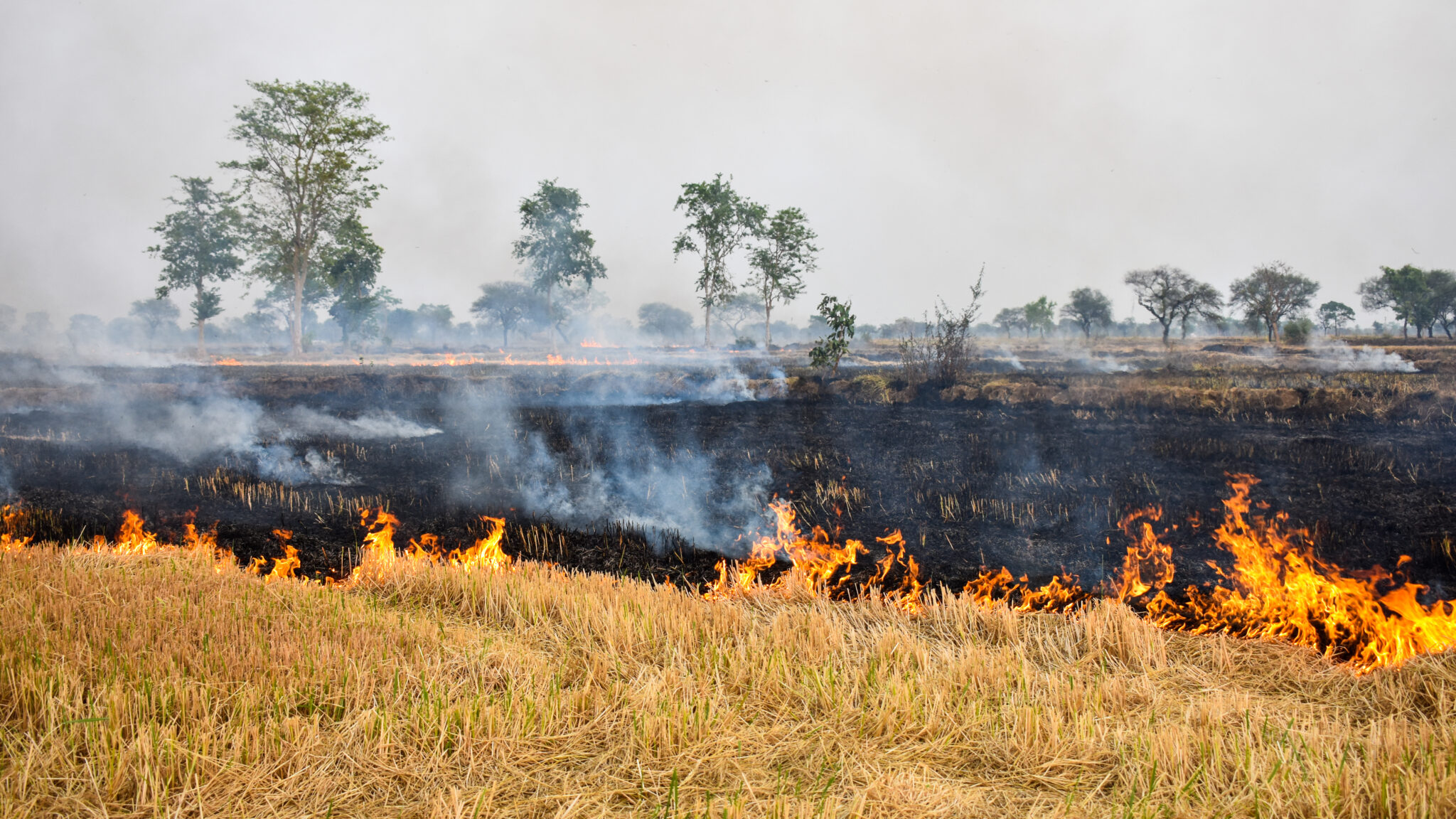Can Conditional Transfer Reduce Crop Residue Burning and Improve Child Health?

Photo Credit: Adobe Stock
Agricultural productivity gains and the commercialization of the agricultural sector may negatively impact the long-term health of the environment. For example, in northern India, mechanized harvesting of rice paddy fields has increased farmer profits, but has also created massive air quality problems since it is connected with the practice of burning crop residue to clear fields after harvest. In cooperation with the Government of Punjab, this evaluation will test strategies to encourage farmers to use more environmentally-friendly alternatives to residue burning. Farmers will be randomly assigned to receive either a conditional cash transfer (CCT) dependent on a farmer not burning their fields, information on the availability of crop residue management technology (CRM), or both. The researchers will measure farmer take-up of CRM technology, as well as yields, input use, profits, and area planted. They will also measure crop burning prevalence and environmental outcomes like pollution to understand whether public interventions can help manage the tension between agricultural productivity growth and environmental impacts.
Policy Issue
Gains in agricultural productivity may incur environmental costs. Even when technologies exist, such as crop residue management (CRM) equipment, to mitigate harm to the environment, use of these technologies by farmers is often low. This low take-up may be a result of personal gains, such as better soil fertility, taking precedence over socially beneficial outcomes, such as less air pollution. Low take-up could also be a result of lack of timely and affordable access to equipment, or a combination of both possibilities. Cash transfers to incentivize socially beneficial behavior may be able to increase the personal value of this positive behavior, while increased information about where to rent environmentally friendly equipment may solve the access issue. While rental markets are important for ensuring small-scale farmers can access machinery, there is little evidence about the impact of public interventions on the success of rental markets or the environmental impacts of increased use of these technologies.
Context of Evaluation
India’s Green Revolution led to unprecedented productivity improvements, in part through greater use of mechanization. However, by extension, productivity improvements also worsened environmental outcomes. For example, mechanized harvesting of rice paddies leaves 8-10 inches of paddy stock, which farmers burn in a practice called crop residue burning. This burning has degraded air quality in northern India. One potential solution is crop residue management (CRM) equipment, which helps farmers mulch and incorporate paddy residue into their fields, obviating the need to burn. The Indian government has supported rental markets for CRM equipment by subsidizing the cost of this equipment for custom hiring centers (CHCs) so that these centers may rent equipment to farmers; however, few farmers use CRM equipment. The study population consists of Punjabi paddy farming villages for which satellite imagery was able to identify as areas with a high rate of burning in 2018. In these villages, farmers can rent CRM equipment from CHCs, co-operative societies, or individual farmers.
Details of the Intervention
In order to facilitate the functioning of mechanization rental markets for environmentally friendly technologies and to reduce crop burning, the researchers will provide farmers with either a conditional cash transfer (CCT) dependent on a farmer not burning their fields, information on the availability of crop residue management technology for rent, or both. Researchers will randomly assign 240 villages, with 20 farmers studied in each village, into four groups:
- Pure control (60 villages): Business as usual, with no CCT and no information intervention.
- Conditional cash transfer (60 villages): Farmers will be enrolled in the CCT program, and will receive a payment of between 500-1500 rupees ($7-$21) per acre in November (post-planting time for winter crops), conditional on using nonburning methods to manage paddy crop residue. Villages will be visited every 2-3 days during the 3 week burning period to monitor compliance. The aim of the CCT is to provide an incentive that discourages burning, while also giving farmers the resources and flexibility to procure equipment from their preferred sources.
- Information on CRM equipment availability (60 villages): Farmers will be given access to
information about the app that shows the availability of equipment available for rental, and encouraged to install it. There are several potential suppliers: CHCs, co-operative societies, and individuals. - CCT + information (60 villages): Farmers will be enrolled in the CCT program, and also given information about the app and encouraged to install it.
The researchers will measure farmer take-up of CRM technology, as well as yields, input use, profits, and area planted with surveys. They will also measure crop burning prevalence and yields with remote sensing data, as well as environmental outcomes with pollution monitors.
Results and Policy Lessons
Evaluation ongoing, results forthcoming.
This evaluation summary was originally drafted by J-PAL and posted on the J-PAL website.

